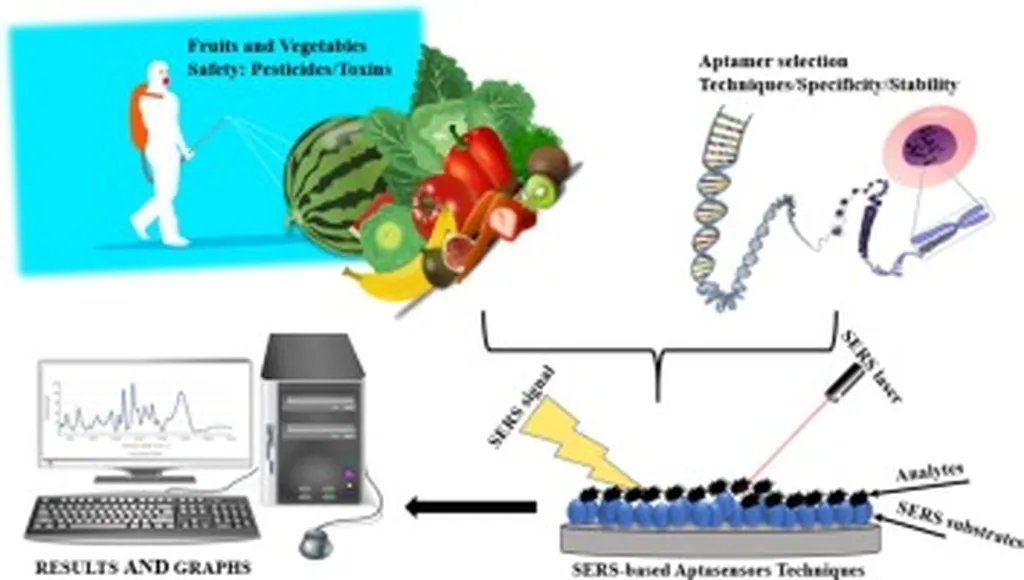In the ever-evolving landscape of food safety, a groundbreaking review published in *Foods* is shedding light on the rapid advancements in Surface-Enhanced Raman Spectroscopy (SERS) for detecting organophosphorus pesticides (OPPs) in food. This technique, which has gained significant traction in recent years, is proving to be a game-changer in the agricultural sector, offering sensitive and selective detection of harmful pesticides in complex food matrices.
The review, led by Kaiyi Zheng from the School of Food and Biological Engineering at Jiangsu University, delves into the intricate world of substrate engineering, highlighting the structure–performance relationships between nanomaterial design and molecular enhancement mechanisms. “The key to unlocking the full potential of SERS lies in understanding how different functional groups, such as P=O, P=S, and aromatic rings, influence Raman activity through combined chemical and electromagnetic effects,” Zheng explains.
The study critically evaluates state-of-the-art substrates, including noble metals, carbon-based materials, bimetallic hybrids, MOF-derived systems, and emerging liquid metals. These substrates are assessed for their sensitivity, stability, and applicability in typical food matrices like fruit and vegetable surfaces, juices, grains, and agricultural waters. The reported performance is impressive, with detection limits ranging from sub-μg L−1 to low μg L−1 in liquids and 10−3 to 10 μg cm−2 on surfaces, and reproducibility often within the 5–15% RSD range under optimized conditions.
However, the journey is not without its challenges. The review emphasizes persistent issues such as substrate variability, quantitative accuracy under matrix interference, and limited portability for real-world applications. To address these challenges, the study discusses structure–response correlation models and data-driven strategies as tools to improve substrate predictability. While AI and machine learning show promise for automated spectral interpretation and high-throughput screening, current applications remain primarily proof-of-concept rather than routine workflows.
The commercial impacts of this research on the agriculture sector are profound. With the increasing demand for food safety and quality assurance, the development of portable and reliable detection systems is crucial. “Standardized fabrication protocols and portable detection systems are future priorities,” Zheng notes. “These advancements will accelerate the translation from laboratory research to practical deployment in food safety and environmental surveillance.”
As we look to the future, this research paves the way for innovative solutions in pesticide detection, ensuring safer food products and a healthier agricultural ecosystem. The integration of computation-guided multidimensional designs and AI-driven analytics holds the key to unlocking the full potential of SERS, making it an indispensable tool in the fight for food safety.

